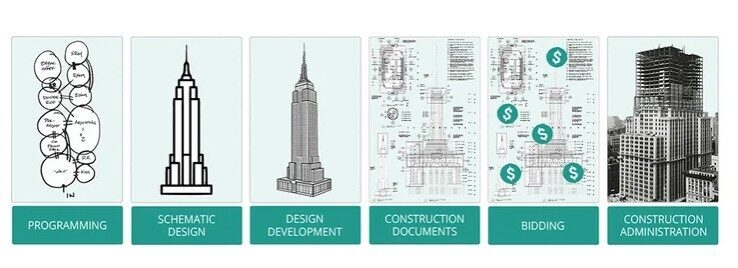Understanding the Architectural Design Process: A Critical Framework for the ACE Community
The A&E, or Architects, Consultants, and Engineers (ACE) programs emerged from the manufacturing sector’s need to get ahead of the building process. These professionals are integral to every phase of construction, ensuring that projects are designed, analyzed, and executed efficiently. While project managers typically serve as the owners and gatekeepers of construction projects, ACE professionals hold a significant role in shaping and guiding the process.
As a construction project unfolds, it faces numerous external and internal influences, including regulations, environmental factors, and stakeholder demands. The accuracy of drawings and documentation is crucial to avoiding costly mistakes, making the architectural design process an essential foundation for any successful build.
For the ACE community, the architectural design process is more than just a series of steps, it is the framework that ensures collaboration among all involved parties. Architects, engineers, and consultants must work together to integrate structural integrity, design functionality, and compliance with regulations, while ensuring that contractors and project managers have a clear blueprint to follow. This level of coordination is essential to mitigating risks, avoiding delays, and maintaining cost efficiency.
The architectural design process is structured into seven phases, each designed to bring order to complex construction projects. These phases allow for periodic reviews, structured release of design information, and clear invoicing periods. Without this structured approach, projects would be prone to miscommunication, rework, and significant financial losses.
Construction projects are inherently complex, requiring strict adherence to regulations, budgets, and schedules. Once a project breaks ground, making changes to the architectural design is extremely difficult and costly. That’s why the architectural design process is indispensable, it establishes a roadmap for successful project execution and ensures that all stakeholders, from architects to engineers to contractors, are aligned.
Clear and efficient communication of design intent is key to reducing risks that could cause project delays. By structuring the design process into well-defined phases, the ACE community can ensure seamless coordination across teams, making it easier to anticipate challenges and address them proactively.
One of the biggest challenges in construction management is coordinating multiple disciplines. Architects create designs, engineers ensure structural integrity, and contractors execute the plan, all while collaborating with vendors, suppliers, and on-site teams. The architectural design process provides a systematic approach for these diverse groups to work in sync.
The process includes:
Pre-Design (Programming Phase) – Architects gather critical information about the site, zoning regulations, and project requirements to establish the groundwork for design.
Schematic Design (SD) – Preliminary design concepts are developed and presented to the client, allowing for early feedback and refinements.
Design Development (DD) – A more detailed plan is created, incorporating structural, mechanical, and material selections.
Construction Documents – Finalized technical drawings and specifications are prepared for permitting and contractor bidding.
For the ACE community, understanding and implementing a structured architectural design process is critical to project success. By following these phases, professionals can streamline workflows, reduce costly errors, and improve communication across disciplines. A well-executed design process not only improves efficiency but also fosters a collaborative environment where architects, consultants, and engineers can work together effectively.
Ultimately, the architectural design process is the foundation upon which successful construction projects are built. For those in the ACE community, mastering this process means being able to anticipate challenges, communicate effectively, and deliver high-quality projects on time and within budget. Read The Book>>


